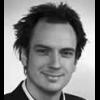The fifth biannual Strategies for Engineered Negligible Senescence biomedical conference is just days away. Getting ready for the trip has cast my mind back not only to previous meetings of this exciting interdisciplinary series, and also to the recent 40th meeting of the American Aging Association (AGE). Along with its international sister organization, the International Association for Biomedical Gerontology (IABG), AGE was the first, and remains the premier, professional scientific organization focused specifically on biomedical research in aging. That is, much of biogerontology research is dedicated to pursuing an ever-more-granular understanding the metabolic processes that contribute to, or fail as a result of, the degenerative aging process. But the scientists at AGE (and IABG) focus their work not on understanding age-related decay, but on its biomedical amelioration. Appropriately, then, it was under IABG's aegis that SENS Foundation Chief Science Officer Dr. Aubrey de Grey organized the first SENS conference.
Despite its biomedical mission, past AGE conferences have sometimes had the atmosphere of being somewhat developmentally frustrated, still centered on the descriptive science and mechanistic basis of degenerative aging, with little of substance on progress towards its retardation -- let alone toward SENS Foundation's mission of its segmental arrest or reversal. This fact was doubtless in some part due to the lack of much to present. Even when ultimately aimed at intervention, most of the research presented at AGE has labored under the "gerontological" heuristic, seeking to tame the metabolic determinants of the accumulating cellular and molecular damage that leads to to progressive loss of tissue structure and function with age, decelerating the degenerative slide. As we have seen repeatedly over the years, this approach often ends in frustration, as the complexity and antagonistic pleiotropy of the underlying metabolic pathways render intervention either ineffective, or too fraught with deleterious consequences, to meaningfully bend the downward curve of aging people's (or experimental animals') health and function. And those failures then fuel curiosity about those very limitations, leading to a risk of scientific careers spent in perpetual digression.
From its opening session, it was clear that this AGE meeting would chart a different course. Organized by Dr. de Grey, the preconference "Late-onset intervention against aging: Tools, approaches, impact" brought the focus squarely back on AGE's interventive raison d'être -- and shed its most intense light on progress toward interventions that could meaningfully bend the degenerative aging curve when administered to persons who are already in the last decades of a current life expectancy. It is these people -- individuals past the age of ~60 -- for whom the medial need for intervention is most pressing, and whose generational demographic trajectory under "aging as usual" poses the most dire social challenges.(1) Therefore, therapies that will slow, arrest, or reverse age-related ill-health and frailty stand to provide the most good -- to each aging person, and to societies as a whole.
Prospects for Retarding Aging ...
Some of the opening-day sessions were devoted to those few interventions based on perturbing metabolic determinants of aging to have demonstrated some benefit in experimental animals when initiated during a similar late-life period. The results of these studies have buoyed the field with enthusiasm for the promise, but the sessions reminded researchers of the limitations and contradictions intermingled in the results. Dr. Z. David Sharp of the Barshop Institute for Longevity and Aging Studies reviewed and updated the National Institutes of Health's Interventions Testing Program (ITP)'s two lifespan studies (2,3) on the mammalian Target of Rapamycin (mTOR) inhibitor rapamycin (sirolimus/Rapamune®), and the ongoing studies to evaluate "healthspan" in treated animals. Intriguing findings included the similarities and differences in the metabolic effects of rapamycin as compared to other "gerontological" interventions in the aging process, of which rapamycin is widely assumed to be a pharmacological "mimetic."(4)
Thus, for example, the most likely mechanism of rapamycin's ability to retard biological aging is through inhibition of mTOR activity, which is thought to contribute to the slowing of age-related degeneration by reducing synthesis of defective proteins, increasing their autophagic degradation, and retarding the rate of cell proliferation (and thus dysplasia and possibly abberant differentiation of cells with age). Recent studies have confirmed that Calorie restriction (CR) and mutations that dampen insulin/insulin-like growth factor-1 (IGF-1) signaling (IIS), also elicit a net reduction in mTOR activity, albeit with some differences in the effects on different parts of the overall pathway. Yet methionine restriction, the only dietary intervention clearly shown to retard aging independent of Calorie intake, has no effect on mTOR.(5) Again, while CR opposes the age-related downregulation of major urinary protein-1 (MUP-1), and rapamycin actively upregulates it, the gene is downregulated in mice with disruption or knockout of the growth hormone receptor gene (GHR-KO) (6)-- and rendering human translation even more confused, mice have ~40 isoforms of the gene, while humans have only one (and this one isoform is itself thought to be a pseudogene). And while increased insulin sensitivity, reduced adiposity, and lower fasting glucose levels are amongst the most robust effects of CR, both rapamycin and some IIS mutations lead to impaired glucose tolerance and a surprising increase in adiposity. Granted that, as Dr. Sharp acknowledges, rapamycin itself is not suitable for use as a human "anti-aging" agent, the fact that prominent age-retarding interventions have so complex a mixture of convergent and divergent effects on major putative effector mechanisms highlights the perils of attempting to translate such findings into therapies for human use.
My own presentation at AGE focused on the evidence on the effects of Calorie restriction in animals, and the prospects for its human translatability, either as a dietary regimen or as harnessed mechanistically through pharmacologic "mimetics." CR was long thought to be ineffective when initiated late in life in experimental animals, but the studies on which this conclusion was based used inappropriate experimental designs. It was only in 2004 that Dr. Stephen Spindler of the University of California Riverside first applied methodological strictures already shown to be necessary to achieve robust life extension even in middle-aged mice, to animals already entering the "knee" of the cohort survival curve. (7) This study for the first time demonstrated that a careful protocol of gradual imposition of CR, using a diet with reduced energy content but the full nutritional contents (including protein) of an ad libitum diet, could indeed extend the remaining life expectancy and retard age-related disease.(7) While the absolute gains were not as great as could be achieved when animals are placed on CR as weanlings or young adults, the increase in remaining life expectancy were shown to be proportionate to what was elicited with an earlier age of initiation, consistent with previous findings.(8) The available evidence seems to be supportive of translatability of the CR effect in the narrow sense, even when initiated late in life, but that alone is not sufficient to evaluate the prospects for its use (or the use of mimetics) as a potential "anti-aging" therapy. Additional considerations weighing negatively on such potential include the higher intrinsic frailty and possibly greater need for protein and energy in older individuals; the complicated relationship between IGF-1 levels, protein, and health outcomes in aging and CR humans; the lower potential benefits of CR or CR-based interventions when initiated late in a the current life expectancy, even assuming full translatability; and the reasons to doubt that such a mimetic would be as powerful as CR itself, would bypass its known side-effects, or would pass through the drug development pipeline and regulatory process to be made available for actual therapeutic use.
... and for Human Rejuvenation
These and similar findings confirm the real but limited potential of therapies that decelerate the rate at which the aging body becomes progressively more frail and susceptible to age-related morbidity and mortality, particularly when administered to persons whose bodies have already suffered significant, if subtle, age-related degeneration. The majority of the sessions dedicated to late-onset intervention were therefore appropriately dedicated to progress in the development of rejuvenation biotechnologies: therapies that aim to remove, repair, replace, or render harmless the damage wrought by aging in the body, so as to restore the structural integrity and healthy function of organs and tissues. Presentations included:
• Dr. Jacques Mathieu of Rice University, presenting progress he has made in "Pre-Empting Atherosclerosis by Eliminating Stored Oxysterols." In the lab of Pedro Alvarez, Mathieu is pursuing the LysoSENS strategy of developing modified lysosomal xenohydrolases to clear out the oxidized cholesterol products whose lysosomal accumulation in macrophages underlies atherogenesis. This has included the isolation and cloning of lysosomal hydrolases from Rhodococcus jostii RHA1, the characterization of its major products, and the identificationof small molecules and components of the autophagic machinery capable of replicating aspects of these effects.
• Dr. Zhenyu Ju of the Institute for Aging Research at Hangzhou Normal University College of Medicine reported defects of haematopoiesis in wild-type mouse haematopoietic stem cells (HSC) when transplanted into late-generation telomerase RNA component knockout mice, related to defects in the systemic environment and bone marrow stromal cells in these animals. However, these defects were substantially ameliorated (and animal survival partially normalized) upon deletion of Exo-1, involved in cell cycle arrest and DNA damage signal induction. These defects will need to be eliminated to allow transplanted, telomere-replete HSC to support health and survival in humans with short telomeres due to aging in the HSC niche.
•Dr. Megan Smithey, from Dr. Janko Nikolich-Zugich's lab at the University of Arizona's Arizona Center on Aging, on results to date in SENS Foundation-funded research aimed at developing preliminary evidence of rejuvenation of the aging immune system, by modeling the benefits of purging defective, aging T-cell clones from the immunological "space," along with tissue engineering of a rejuvenated thymus -- in this case, with the use of growth factors as a proof-of-principle. The results have been limited and difficult to interpret, as it has proven difficult to develop suitable models of both immunosenescence and an appropriate test infection, and there appears to be a highly heterogeneous functional response to growth-factor induced increases in thymic cellularity; future work would incorporate lessons learned during this initial pilot.
• Dr. Shay Soker of the Wake Forest Institute for Regenerative Medicine (WFIRM), reviewing a range of his work with WFIRM Director Dr. Anthony Atala and others, including their use of the decellurized tissue scaffold technique pioneered by Dr. Doris Taylor of the Stem Cell Institute at the University of Minnesota. We have highlighted Dr. Taylor's work, and ongoing progress with the decellularized scaffold technique, ever since we invited her to present her results prior to publication at the Foundation's 2008 Understanding Aging: Biomedical and Bioengineering Apporoaches conference at UCLA, including similar results with reseeded decellularized lungs and liver; Dr. Soker's presentation highlighted his group's significant advance in the use of this system to engineer a highly functional neo-liver in a rodent model last year,(9) and the prospects for the further developments in tissue engineering using this technique and others. As will be highlighted at SENS5, his colleague Dr. John Jackson, also of Wake Forest, has already made some progress in applying the same technique to the engineering of a transplantable thymus, as a means to help rejuvenate the aging immune system, and is now receiving SENS Foundation funding to expand this project, with the anticipation of moving rapidly on to larger malmmalian systems.
• Dr. Jan Vijg, Chair of Genetics at Albert Einstein College of Medicine and the most prominent and productive investigator of the accumulation of nuclear genome mutations with aging, presented work underway (also funded by SENS Foundation) in confirming or ruling out the accumulation of epimutations as a contributor to aging within the confines of present-day lifetimes. While previous research has documented significant changes in methylation status of a number of genes in human brain during aging, these results have not discriminated alterations down to the single-cell level and have only been able to clearly document the similar changes in dynamically-regulated changes in gene methylation status across many cells in the tissue, likely reflecting an adaptive response to the aging environment. Dr. Vijg's new work exploits a novel technique, pioneered by graduate student Silvia Gravina, in analyzing bisulfite conversion of unmethylated cytosines into uracil at the level of the single-cell genome, to reflect cell-specific, genuinely stochastic aberrant methylation events. Using this method, Dr. Vijg and Gravina are evaluating the rate of epimutation in the brains of aging mice. Ruling out age-related (epi)mutations as a cause of a "generalized cellular malaise" so widespread in the constituent cells of aging tissues that they lead to the dysfunction of the tissue (as opposed to their well-established role in carcinogenesis) is critical to advancing with confidence with an ultimate cure for cancer.
Other sessions focused on the genetic basis for preserved health and extended survivorship in the general population and in families of today's exceptional survivors, and the social context and implications of human rejuvenation against the backdrop of a perilously aging world.
... And More
While the rest of the conference included a wide diversity of biogerontology research, there was still a noticeably higher content of experimental interventions in the aging process and aspects of age-related degeneration than in previous years. These included the use of the calcium channel blocker enlarapril to improve skeletal muscle quality and functionality in aging rats (Christy Carter), the extension of the benefits of resveratrol in high-fat-fed, obese, glucose-intolerant mice into a nonhuman primate model (Julie Mattison), further insights into why the same phytochemical did not live up to its early promise as an age-retarding "drug" (Rafal de Cabo), and a promising, ongoing lifespan study with a widely-used, relatively safe, and off-patent medication. There was more optimism and interest in the air than I had detected at previous sessions, and plenty of probing and fruitful questions from audiences.
SENS5
In just a few days, scientists from all over the world, working in a wide range of fields, and many of them not realizing the implications of their own research for preserving and restoring human health and functionality against the degenerative aging process, will gather in Cambridge. The focus of these meetings is unambiguous: to highlight progress and prospects in the suite of rejuvenation biotechnologies that necessary to deliver the wholesale rejuvenation of aging persons, preserving their health, their productivity, and their lives. The atmosphere in these sessions has consistently been electric, as unpublished research results are presented and pieces of a grander puzzle fall into place. The energy of the assembled scientists buoys one through the intensive schedule of scientific revelations. I have seen researchers at critical moments of transition in their careers, who have awoken to the potential of their work to contribute to this goal and have shifted the focus of their work to maximize its impact. I have been approached by researchers as a proxy for Dr. de Grey, thanking me for opening up an entirely new vista on their own work and its contextualization in advancing progress toward a future where lives are lengthened by making old bodies young again, decoupling robust health from calendar age in favor of indefinite extension of the health and vigor of youth. In just days, this biannual cycle will be renewed, and hundreds of researchers will once again bring together their scattered pieces of the puzzle and promise to an engineered end to degenerative aging, snap them into place, and return to their labs and studies around the world ready to create a new future for us all.
References
1: Rae MJ, Butler RN, Campisi J, de Grey AD, Finch CE, Gough M, Martin GM, Vijg J, Perrott KM, Logan BJ. The demographic and biomedical case for late-life interventions in aging. Sci Transl Med. 2010 Jul 14;2(40):40cm21. PubMed PMID: 20630854.
2: Harrison DE, Strong R, Sharp ZD, Nelson JF, Astle CM, Flurkey K, Nadon NL, Wilkinson JE, Frenkel K, Carter CS, Pahor M, Javors MA, Fernandez E, Miller RA. Rapamycin fed late in life extends lifespan in genetically heterogeneous mice. Nature. 2009 Jul 16;460(7253):392-5. Epub 2009 Jul 8. PubMed PMID: 19587680; PubMed Central PMCID: PMC2786175.
3: Miller RA, Harrison DE, Astle CM, Baur JA, Boyd AR, de Cabo R, Fernandez E, Flurkey K, Javors MA, Nelson JF, Orihuela CJ, Pletcher S, Sharp ZD, Sinclair D, Starnes JW, Wilkinson JE, Nadon NL, Strong R. Rapamycin, But Not Resveratrol or Simvastatin, Extends Life Span of Genetically Heterogeneous Mice. J Gerontol A Biol Sci Med Sci. 2010 Oct 25. [Epub ahead of print] PubMed PMID: 20974732.
4: Minor RK, Allard JS, Younts CM, Ward TM, de Cabo R. Dietary interventions to extend life span and health span based on calorie restriction. J Gerontol A Biol Sci Med Sci. 2010 Jul;65(7):695-703. Epub 2010 Apr 6. Review. PubMed PMID: 20371545; PubMed Central PMCID: PMC2884086.
5: Sun L, Sadighi Akha AA, Miller RA, Harper JM. Life-span extension in mice by preweaning food restriction and by methionine restriction in middle age. J Gerontol A Biol Sci Med Sci. 2009 Jul;64(7):711-22. Epub 2009 May 4. PubMed PMID: 19414512; PubMed Central PMCID: PMC2691799.
6: Miller RA, Chang Y, Galecki AT, Al-Regaiey K, Kopchick JJ, Bartke A. Gene expression patterns in calorically restricted mice: partial overlap with long-lived mutant mice. Mol Endocrinol. 2002 Nov;16(11):2657-66. PubMed PMID: 12403853.
7: Dhahbi JM, Kim HJ, Mote PL, Beaver RJ, Spindler SR. Temporal linkage between the phenotypic and genomic responses to caloric restriction. Proc Natl Acad Sci U S A. 2004 Apr 13;101(15):5524-9. Epub 2004 Mar 25. PubMed PMID: 15044709; PubMed Central PMCID: PMC397416.
8: Rae M. It's never too late: calorie restriction is effective in older mammals. Rejuvenation Res. 2004 Spring;7(1):3-8. Review. PubMed PMID: 15256039.
9: Baptista PM, Siddiqui MM, Lozier G, Rodriguez SR, Atala A, Soker S. The use of whole organ decellularization for the generation of a vascularized liver organoid. Hepatology. 2010 Nov 12. [Epub ahead of print] PubMed PMID: 21225647.
View the full article
















































